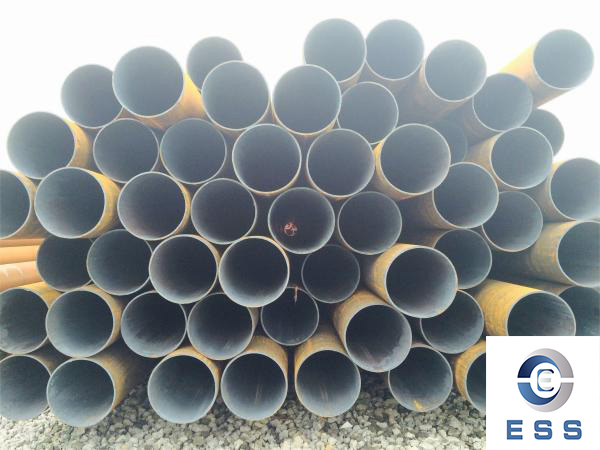Common Weld Defects in Welded Pipes and How to Avoid Them
Introduction
Welding is a fundamental process in the fabrication of pipes, providing strength, durability, and structural integrity. However, like any manufacturing process, welding is susceptible to various defects that can compromise the quality and performance of the welded pipes. Identifying and understanding these common weld defects is crucial for welders, engineers, and quality control personnel to ensure the production of high-quality welded pipes. In this article, we will explore some of the most common weld defects encountered in welded pipes and discuss preventive measures to avoid them.

Lack of Fusion
Lack of fusion is a weld defect that occurs when there is an inadequate bond between the base metal and the filler metal or between successive weld passes. This defect weakens the joint and can lead to structural failure. Lack of fusion can be caused by improper welding technique, insufficient heat input, improper preparation of the joint, or contamination of the base metal. To avoid this defect, it is essential to ensure proper surface preparation, adequate heat input, and correct welding parameters. Welders should also maintain proper arc length and travel speed to achieve proper fusion.
Porosity
Porosity is a common weld defect characterized by the presence of gas pockets or voids within the weld metal. It can significantly reduce the strength and integrity of the welded joint. Porosity can be caused by various factors, including improper shielding gas, moisture contamination, inadequate cleaning of the base metal, or excessive welding speed. To prevent porosity, welders should use the appropriate shielding gas and ensure that the base metal is clean and free from contaminants. Proper storage and handling of welding consumables are also crucial to prevent moisture absorption. Additionally, controlling the welding parameters, such as arc length, travel speed, and current, can help minimize the formation of porosity.
Cracks
Cracks are among the most critical and detrimental weld defects. They can occur during welding or even after the completion of the welding process. Cracks can be categorized into three main types: hot cracks, cold cracks, and stress cracks. Hot cracks form during solidification, while cold cracks occur after the weld has cooled. Stress cracks develop due to residual stresses in the welded joint. Cracks can result from a variety of factors, including improper joint preparation, excessive heat input, rapid cooling, or high levels of residual stress. Preventive measures include proper joint design, control of heat input, and the use of preheating and post-weld heat treatment techniques to reduce residual stresses.
Undercut
Undercut is a groove-like depression along the toe of the weld caused by the melting away of the base metal. It weakens the joint and reduces its load-carrying capacity. Undercut can be caused by excessive welding current, high welding speed, improper electrode angle, or improper manipulation of the welding arc. To avoid undercut, welders should carefully control the welding parameters, maintain the correct electrode angle, and use proper weaving techniques to ensure adequate fusion between the weld metal and the base metal.
Incomplete Penetration
Incomplete penetration is a weld defect that occurs when the weld metal fails to fully penetrate the joint, resulting in a weak and inadequate bond. This defect can be caused by insufficient heat input, improper joint preparation, or improper welding technique. To prevent incomplete penetration, it is important to ensure adequate heat input, proper joint preparation, and correct electrode manipulation. Welders should use the appropriate welding technique, such as the correct weaving pattern, to ensure complete penetration and fusion.
Excessive Reinforcement
Excessive reinforcement refers to an excess build-up of weld metal beyond the required size or profile. It can lead to dimensional inaccuracies, stress concentration, and potential failure in the welded joint. Excessive reinforcement can occur due to improper welding technique, excessive heat input, or incorrect electrode manipulation. To avoid excessive reinforcement, welders should follow the specified welding procedures and adhere to the correct welding parameters, including electrode size, travel speed, and weaving technique.
Conclusion
Weld defects in welded pipes can compromise their structural integrity and performance. Understanding the common weld defects and implementing preventive measures is crucial to ensure the production of high-quality welded pipes. By employing proper welding techniques, controlling welding parameters, and following the recommended procedures, welders can minimize the occurrence of defects such as lack of fusion, porosity, cracks, undercut, incomplete penetration, and excessive reinforcement. A comprehensive quality control system, including visual inspection, non-destructive testing, and adherence to industry standards and codes, is also essential to identify and rectify any defects that may arise. With the proper knowledge and attention to detail, welders can produce robust and reliable welded pipes that meet the required standards and specifications.













 Eastern Steel Manufacturing Co.,Ltd not only improve product production and sales services, but also provide additional value-added services. As long as you need, we can complete your specific needs together.
Eastern Steel Manufacturing Co.,Ltd not only improve product production and sales services, but also provide additional value-added services. As long as you need, we can complete your specific needs together.










